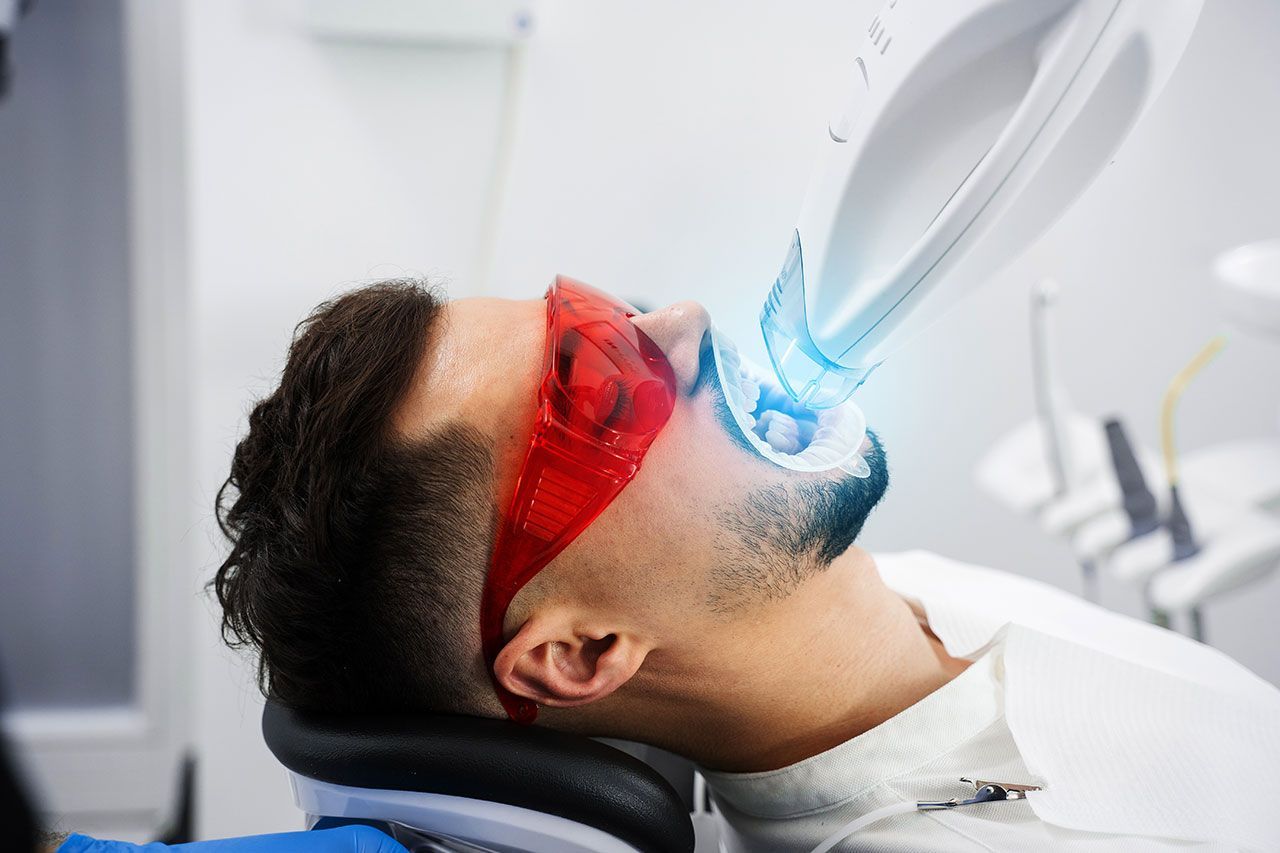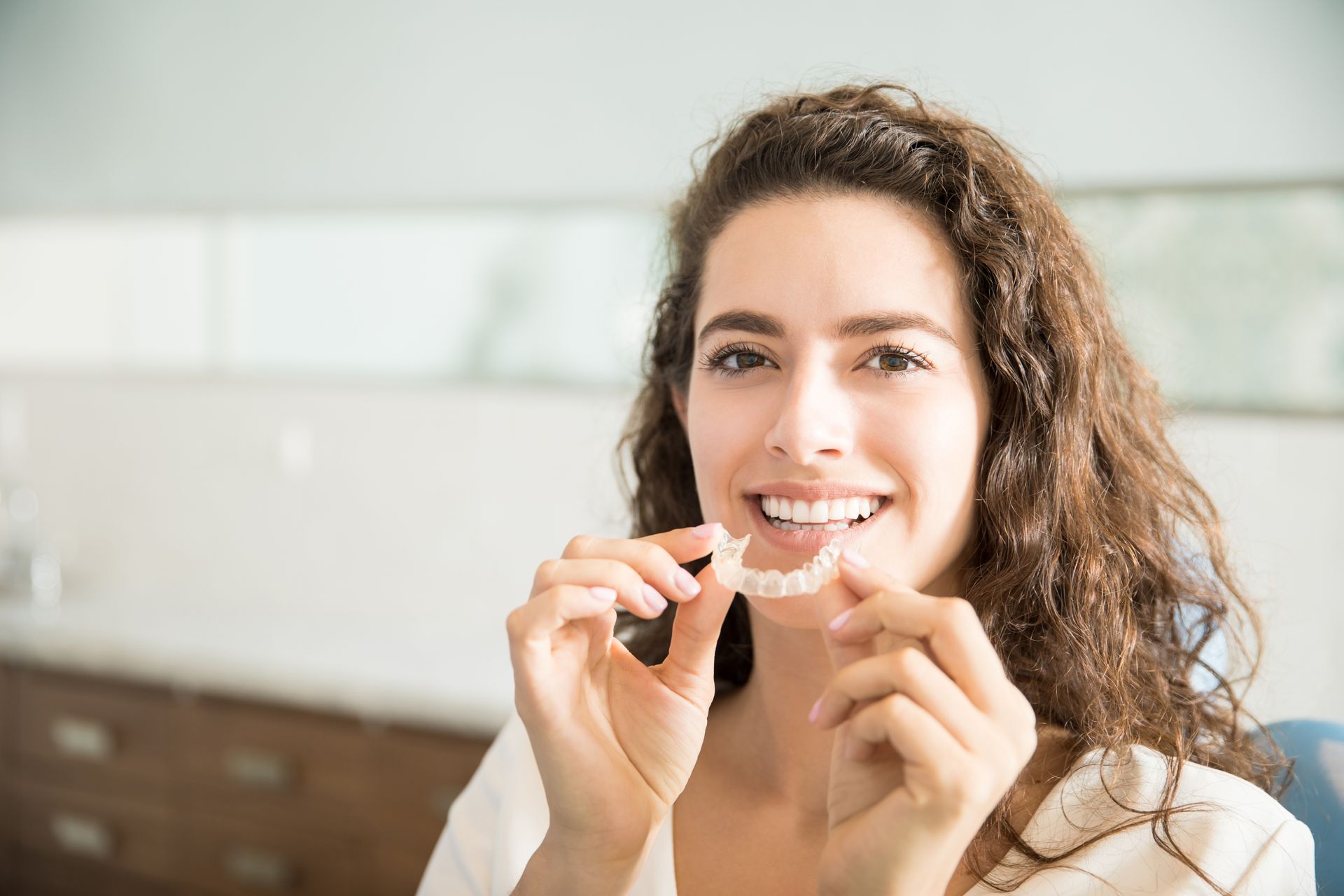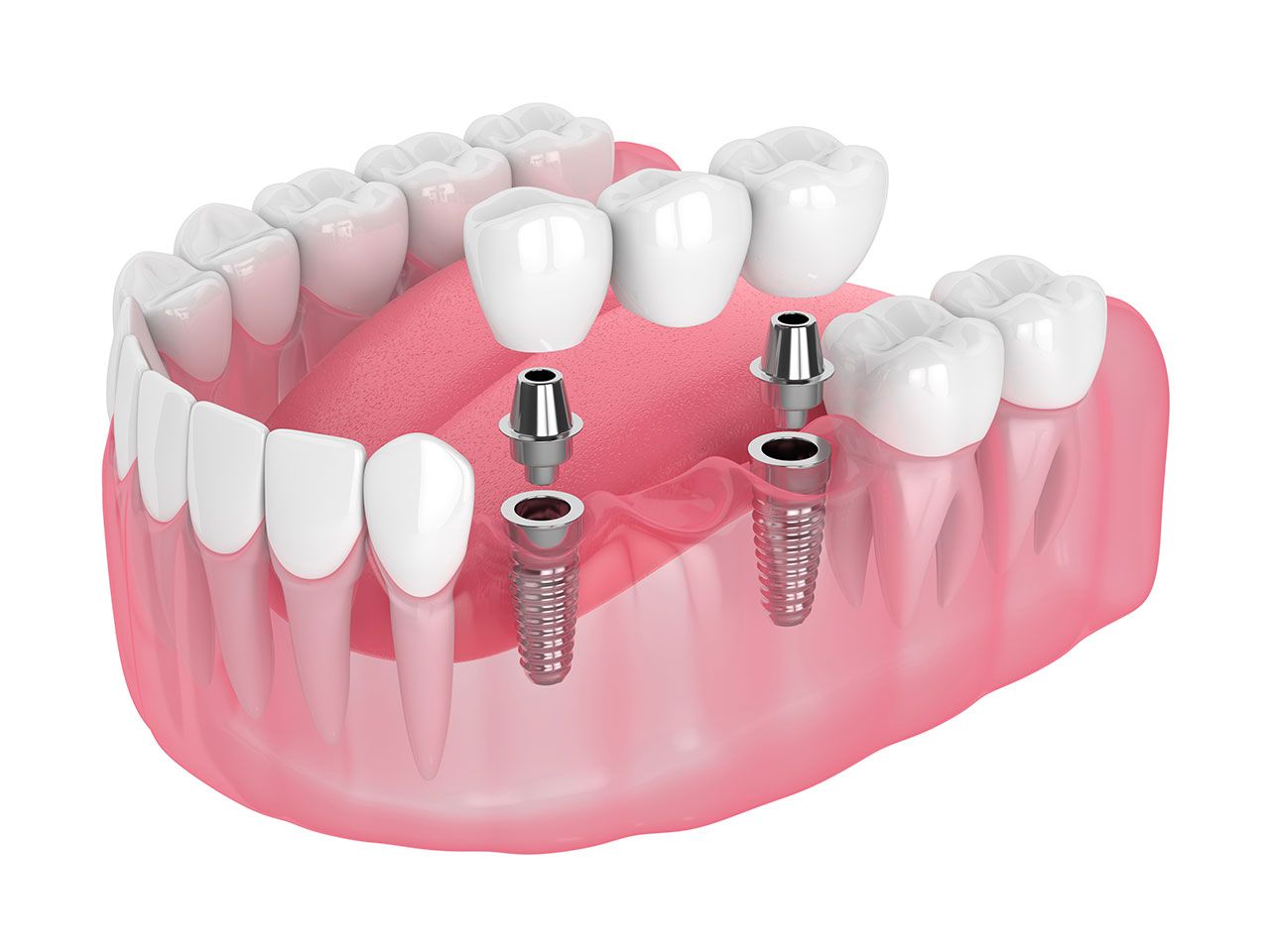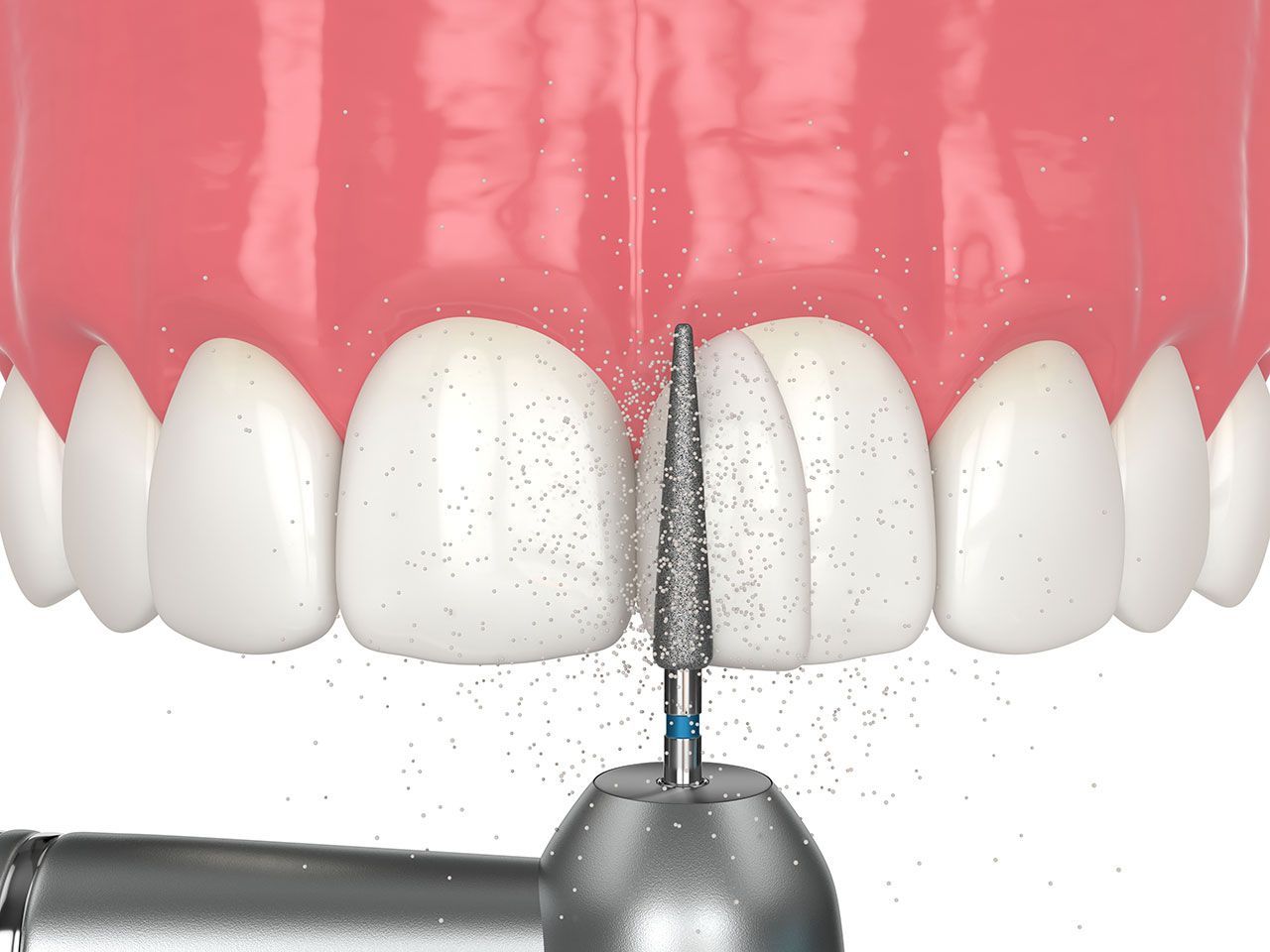Front-Facing Fix or Full Restoration? Understanding Veneers vs. Crowns
When you look in the mirror, do you wish your teeth could get the makeover equivalent of a fresh coat of paint—or do they need a full remodel to stay standing? Knowing the difference between thin porcelain veneers and full-coverage porcelain crowns can help you choose the right path to a brighter, stronger smile.
What Are Veneers—And How Do Veneers Work?
Veneers are wafer-thin porcelain shells that bond to the front of a tooth. To make room, a dentist removes only a sliver of enamel—usually less than a millimeter—then takes a digital scan or impression. Skilled technicians craft each veneer to match your chosen color and shape, and at a follow-up visit the final porcelain is etched, bonded, and polished so it sits flush with neighboring teeth. Because preparation is minimal and the veneer covers only the visible surface, the treatment is considered primarily cosmetic, ideal for masking stains, closing small gaps, or evening out jagged edges.
Fast facts on how veneers work:
- Enamel removal is conservative, preserving most natural tooth structure.
- Modern porcelain reflects light like real enamel and resists everyday stains.
- Once a veneer is placed, the process is irreversible; expect replacement every 10–20 years.
What Exactly Are Porcelain Crowns?
A porcelain crown—sometimes called a cap—encircles the entire tooth above the gumline. After reshaping all sides of the tooth, the dentist places a temporary crown while a lab fabricates the final restoration. When bonded in place, a crown restores strength lost to deep decay, cracks, or root-canal treatment, while also upgrading appearance. All-ceramic materials such as lithium-disilicate and zirconia deliver the translucency of glass with the fracture resistance needed for everyday chewing, letting patients avoid metal margins without sacrificing durability.
Veneers vs. Crowns
- Amount of Tooth Removed
- Veneers call for front-surface shaping only, generally 0.3–0.7 mm.
- Crowns require full circumferential reduction—often 1 mm on the sides and up to 2 mm on biting surfaces—to create space for stronger ceramic materials.
- Primary Mission
- Veneers focus on aesthetics: brightening discoloration, correcting minor misalignment, and perfecting shape.
- Porcelain crowns rebuild strength first, then improve looks—especially after large cavities or fractures.
- Bite Stress Handling
- Thin veneers suit patients with light to normal bite forces.
- Crowns distribute chewing pressure across the whole tooth, making them the safer choice for heavy clenchers or anyone needing post-root-canal reinforcement.
- Longevity & Maintenance
- Both restorations can last 10–20 years with good care.
- Each demands daily brushing, flossing, and routine dental visits. For night-time grinders, a custom guard helps protect either option.
- Cost & Insurance
- Veneers usually cost less per tooth, but most insurance plans see them as elective.
- Crowns cost more because they use extra material and chair time, yet partial benefits often apply when decay or fracture is documented.
Evidence-Based Benefits of Cosmetic Dentistry
The American Academy of Cosmetic Dentistry (AACD) reports that nearly half of adults say a smile is the most memorable feature when they first meet someone, linking improved smiles to higher self-confidence and better social interactions. American Academy of Cosmetic DentistryAmerican Academy of Cosmetic Dentistry Meanwhile, guidance in the Journal of the American Dental Association notes that newer ceramic materials let dentists deliver restorations that are both beautiful and durable, reducing premature failures.
Why these findings matter:
- Better Oral Habits: People who love their teeth tend to brush more thoroughly and keep preventive appointments, lowering long-term risks for cavities and gum disease.
- Material Advances: Zirconia crowns boast high fracture strength, while layered porcelains in veneers maintain color stability for a decade or longer.
Who Is the Ideal Candidate?
Veneers Might Suit You If
- Your teeth are basically healthy and free of large fillings.
- You want to brighten stains that resist whitening, close mild gaps, or fine-tune shape quickly.
- You have no untreated bruxism—or you are ready to wear a night guard to protect thin porcelain.
Porcelain Crowns Might Suit You If
- A tooth has significant decay, a crack, or has undergone root-canal therapy.
- You experience heavy clenching or biting forces that could fracture thinner restorations.
- You seek a single procedure that both strengthens and beautifies a compromised tooth.
A comprehensive exam—complete with digital X-rays, intraoral photos, and bite analysis—will pinpoint which path protects your long-term oral health.
Frequently Asked Questions
Will placing veneers hurt? Most patients experience only mild sensitivity after enamel reduction, eased with over-the-counter pain relievers and disappearing within days.
Are porcelain crowns obvious? With today’s translucent ceramics and precise color matching, crowns blend seamlessly; friends won’t spot the difference.
Do veneers stain like natural teeth? High-quality porcelain resists coffee and tea stains far better than enamel, though dark beverages should still be enjoyed in moderation.
Your Next Step Toward a Confident Smile
Choosing between a front-surface veneer and a full-coverage crown is less about fashion and more about function. Veneers excel when you need a conservative cosmetic lift; porcelain crowns shine when strength is the priority. By understanding how do veneers work and when porcelain crowns are the wiser investment, you can talk with your dentist from a position of knowledge—and excitement.
Ready to see which option fits your goals? Schedule a consultation at Wow Dental, 18525 Moross Rd, Detroit, MI 48224 or call 313-371-9880. Your best smile is only a decision away—take that step today.
Share This Article










